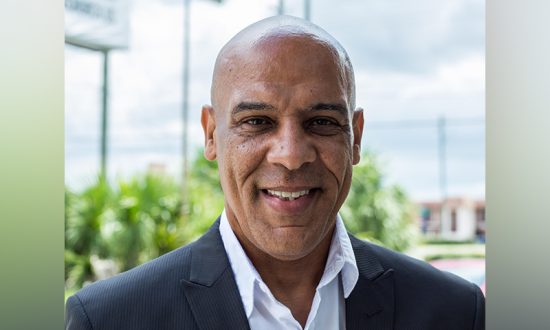Manuel Hernandez is a teacher in Florida who developed an after-school writing club for ESOL students and mentored them as they edited and published a collection of essays about their journeys to the United States. After two consecutive publications, Hernandez helped students align their stories to scholarship prompts. As a result, dozens of students have received scholarships for colleges and in some cases, students received full-ride scholarships.
The Bilingual Education Act of 1968 was the gateway for students of limited English-speaking ability. For the first time, the federal government was accountable to a legal stipulation that provided financial assistance for innovative bilingual programs. I had the opportunity to work for such a program in New York City in 1988; I participated in numerous efforts by the New York City public schools that provided staffing, staff training, and other innovative projects. Through such a program at the Bilingual Program at James Monroe High School in The Bronx, the legendary Nuyorican poet, Tato Laviera, was invited to read, speak, and perform “poetry in action”. It was during the reading of the poem “Boricua” that I made a heart-to-heart personal connection and understood that I needed to construct culturally relevant bridges if I wanted teen immigrant students to walk across the bridge and develop English Language skills. The Bilingual Education Act was amended several times thereafter, but the provisions remained the same: provide access to bilingual programs for children of limited means. Although the law is still intact in “writing and in principle”, the great majority of the legislation has existed in a system of deniability which has preferred to ignore the imminent growth of minority populations in the United States and deny access to the benefits of The Bilingual Education Act of 1968.
U.S. Census projections, researchers, and scholars alike agree that the current minority population growth is once again at an unprecedented increase rate and will result in a total population shift before or by the mid-century. According to Grace Chen, interracial marriages, and an increased migration shift has changed the demographics of schools (“White Students are Now the Minority in U.S. Public Schools”), and the change surpasses trends and expectations in the public school system. One example is Florida. The minority population in Florida continues to rise each year. There are more than 1,000,000 Puerto Ricans in Central Florida alone. With the current political debacle and economic mayhem in Venezuela, Colombia, and other Central, and South American countries, the numbers are going to continue to increase every year. As a result of the President’s current immigration policies, the numbers of families crossing our borders are astronomical and will continue to escalate for years and decades to come.
Furthermore, recently arrived ESL students do not necessarily come academically equipped with the college and career readiness skills required to be college and career ready. With Bilingual Education programs in many states completely non-existent, much of the educational strategies used to engage ESL students are contingent on local initiatives. The United States Department of Education was never prepared for the current shift in school demographics. Consequently, millions of recently arrived children are at the mercy of an educational system in plausible deniability of its responsibilities. Some will argue in favor of English Only policies and urge ESL students to adapt and adjust to an educational system primarily built for native speakers of English. Albert Einstein said that “insanity is doing the same thing over and over again and expecting a different result.” With the sudden and unexpected increase of second language learners in our schools, it is insane to pretend to use “the same” educational strategies designed for native speakers of the language with students who arrived with a different set of cultural values.
Throughout my close to the four-decade experience in two different states (New York and Florida) and one U. S. territory (Puerto Rico), I have personally lived the ambiguity and incongruity in which these educational systems establish, implement, and operate second language learning policies. In Florida, a thirty-plus-year Consent Decree is still using the same procedures it recommended for students in 1990. How can we completely understand the often-challenging realities (linguistic, cultural, and racial) of the students who relocate to the United States? How can English language skills be used not only to center these realities but also to challenge and reclaim the narratives of oppression that can inform them? Zeus Leonardo, in his book Race Frameworks: A Multidimensional Theory of Racism and Education, notes that “if people of color have represented anything in the history of race relations, it is hope” (165). As stakeholders in education, we can encourage hope, along with healing and self-advocacy, through the opportunities we provide to students.
As we continue to navigate through the 21st century, more and more communities are going to continue to look and be more culturally diverse. Corporations and entrepreneurs have recognized the growing economic power of minorities in the United States. It is undeniable! However, the educational system which serves them is stagnant. It took Nelson Mandela twenty-seven years to understand that “apartheid” could not be met with the same force he was fighting. The acclaimed Laviera said it best in his poem titled, “Fighting”. In the poem, he shouts in the first four verses: “ceased to be physical when I realized my natural potential for dealing with institutions on their own word and logic turf…” (la carreta made a u-turn, p.31). You can’t grow without an education. You can’t fight without an education. Keeping a great minority quiet is what keeps a small majority in power and with total access to the country’s institutions. Ultimately, it is really not about what they can do, but it is what all of us can do to “deal with institutions on their own word and natural turf”.




